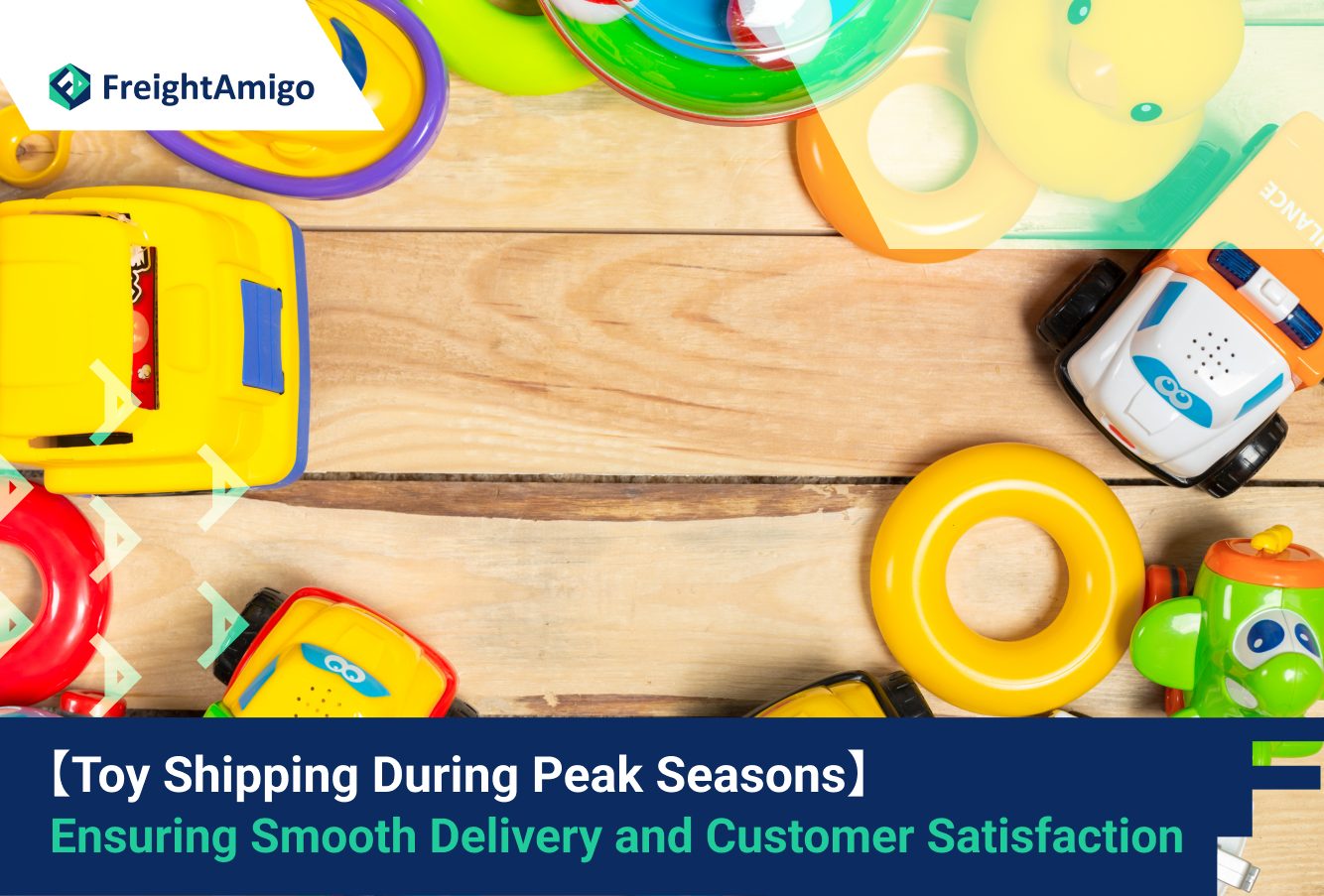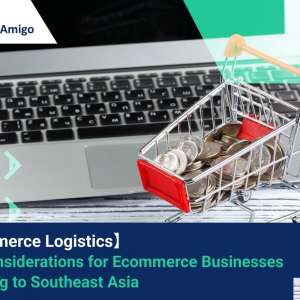January 2nd, 2024: Maya Wong – Marketing Analyst at FreightAmigo
The holiday season is a time of joy and excitement, especially for the toy industry. As consumers eagerly shop for the perfect gifts, retailers and manufacturers face the challenge of meeting the heightened demand and ensuring timely delivery of toys and games. In this article, we will explore the intricacies of toy shipping during peak seasons, discuss the challenges faced by the industry, and provide strategies to minimize delays and maximize customer satisfaction.
Say hello to the ecommerce peak season! FreightAmigo, a supply chain e-marketplace, would ship your documents, small parcels or pallet anywhere in the world with flexible solutions. Many major holidays are bunched together around this time of year, leading to surges in traffic, sales, shipping, and returns. Now is the time to plan for shipping and delivery!
Get an instant quote on FreightAmigo and make trade easier!
Understanding Peak Shipping Season
Peak shipping season, typically occurring from October to December, is a period of intense activity in the toy industry. It is characterized by a significant increase in shipment volume as retailers and manufacturers strive to fulfill orders for the busy holiday season. During this time, demand for toys and games soars, driven by celebrations such as Christmas, New Year, and Black Friday.
The surge in consumer activity during peak season poses unique challenges for retailers and manufacturers. To meet the heightened demand, manufacturers must produce goods on a massive scale and ensure their timely delivery to retailers. However, the simultaneous increase in shipment orders can lead to volume overload, resulting in shipment delays and high freight rates. Additionally, the ongoing COVID-19 pandemic and associated restrictions further compound the challenges faced during peak shipping season.
Overcoming Peak Season Challenges
1.Plan Ahead for Peak Season
Effective planning is crucial to navigate the complexities of peak shipping season. Retailers should begin preparing well in advance, several months before October, to manage the influx of demands. By implementing a demand and inventory forecasting system, retailers can analyze historical data, identify seasonal trends, and determine the fast-selling products. This early preparation allows retailers to make informed decisions, optimize stock levels, and arrange production with manufacturers in advance.
2.Enhance Communication between Manufacturers and Retailers
Close collaboration between manufacturers and retailers is vital to ensure smooth operations during peak season. Retailers should maintain regular and transparent communication with manufacturers, sharing information on well-stocked and out-of-stock items. This transparency enables manufacturers to plan production lead times, produce goods on-demand, and minimize the chances of popular items running out of stock. By aligning their efforts, manufacturers and retailers can streamline the supply chain and meet customer expectations.
3.Leverage Third-Party Logistics Providers (3PL)
Partnering with a reliable third-party logistics provider (3PL) can alleviate the burden of managing peak shipping season. 3PLs are experienced in handling complex logistics processes and can effectively manage the entire supply chain, from picking up goods to arranging flights and filling customs documentation. Their expertise ensures efficient transportation and timely delivery of toys and games, enabling retailers to focus on other critical aspects of their business.
Optimizing Inventory and Fulfillment
1.Review and Optimize Inventory
In a dynamic market, maintaining the right balance of inventory is crucial to meet customer demand while minimizing costs. Retailers should regularly review their inventory and identify items that are overstocked or understocked. By analyzing sales data and identifying product associations, such as batteries for electronic toys, retailers can offer discounts or bundle promotions to optimize inventory and create space for in-demand items.
2.Streamline Order Fulfillment Processes
Efficient order fulfillment processes are essential to meet customer expectations during peak season. Retailers should invest in automation and technology solutions to streamline warehouse operations. Utilizing barcode systems, conveyor belts, and robotics can improve order accuracy, speed up packing and shipping processes, and reduce the chances of errors or delays. By automating manual tasks, retailers can handle the increased volume of orders without compromising efficiency.
Addressing Shipment Delays and Freight Costs
1.Diversify Shipping Options
During peak season, it is essential to explore alternative shipping options to mitigate delays and control freight costs. Retailers should consider diversifying their shipping partners and exploring multiple modes of transportation, such as air freight and ocean freight. Air freight offers faster delivery times, but it can be more expensive. On the other hand, ocean freight provides cost-effective solutions for larger shipments but may have longer transit times. By diversifying shipping options, retailers can strike a balance between speed and cost.
2.Optimize Packaging and Labeling
Proper packaging and labeling can significantly impact the efficiency of shipping and reduce the risk of delays. Retailers should ensure that toys and games are packaged securely to prevent damage during transit. Additionally, clear and accurate labeling, including barcodes and tracking information, enables seamless tracking and monitoring of shipments. By optimizing packaging and labeling processes, retailers can enhance the visibility and traceability of their shipments, reducing the chances of errors or misplacements.
Conclusion
Toy shipping during peak seasons presents both challenges and opportunities for retailers and manufacturers. By understanding the dynamics of peak shipping season, planning ahead, enhancing communication, optimizing inventory and fulfillment processes, and addressing shipment delays and freight costs, retailers can ensure smooth delivery and maximize customer satisfaction. Investing in technology, automation, and third-party logistics providers can significantly contribute to a successful peak season. As the demand for toys and games continues to grow, strategic and proactive measures are essential to meet customer expectations and drive business growth.
There are different options for cargo transportation. If you want to choose the most convenient and suitable solution, it is best to have the full support of logistics experts! If you are planning to ship goods overseas, please go to the FreightAmigo page for inquiries.
===
Read More:
【Expert Tips for Packaging Toys for Shipping】 Protecting Your Products and Delighting Customers
【Logistics 101】 The Impact of Toy Shipping on the E-commerce Industry
【Strategies for Toy Retailers】 Ultimate Guide to Toy Shipping During Peak Seasons
===
If you have any inquiries on logistics/supply chain, feel free to contact FreightAmigo now:
Chat with us online OR
Phone : +852 28121686
WhatsApp: +852 27467829









































